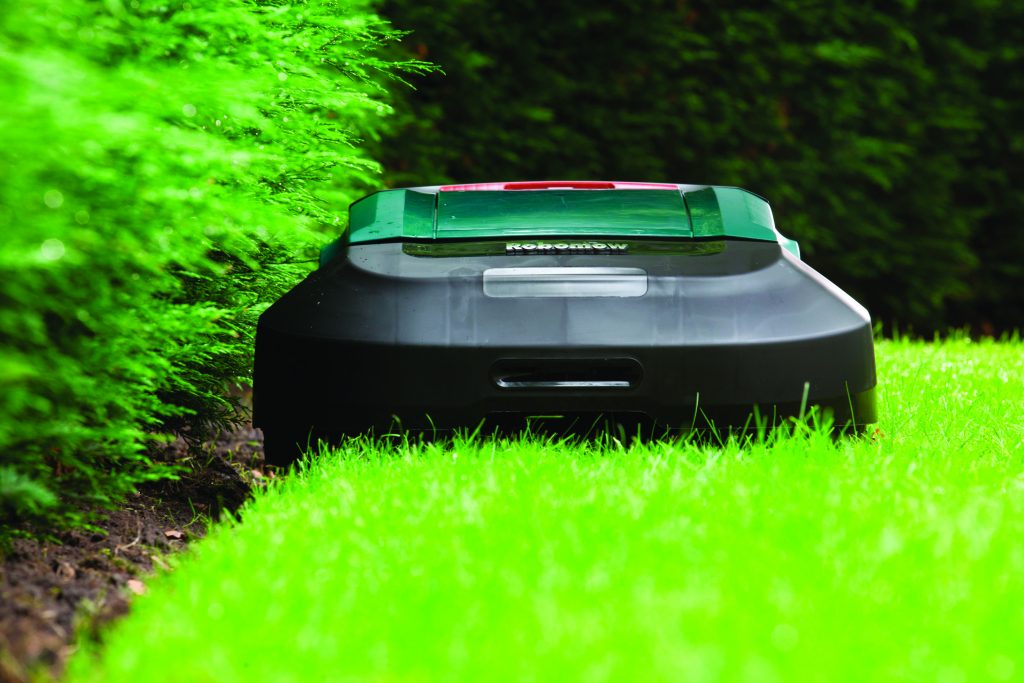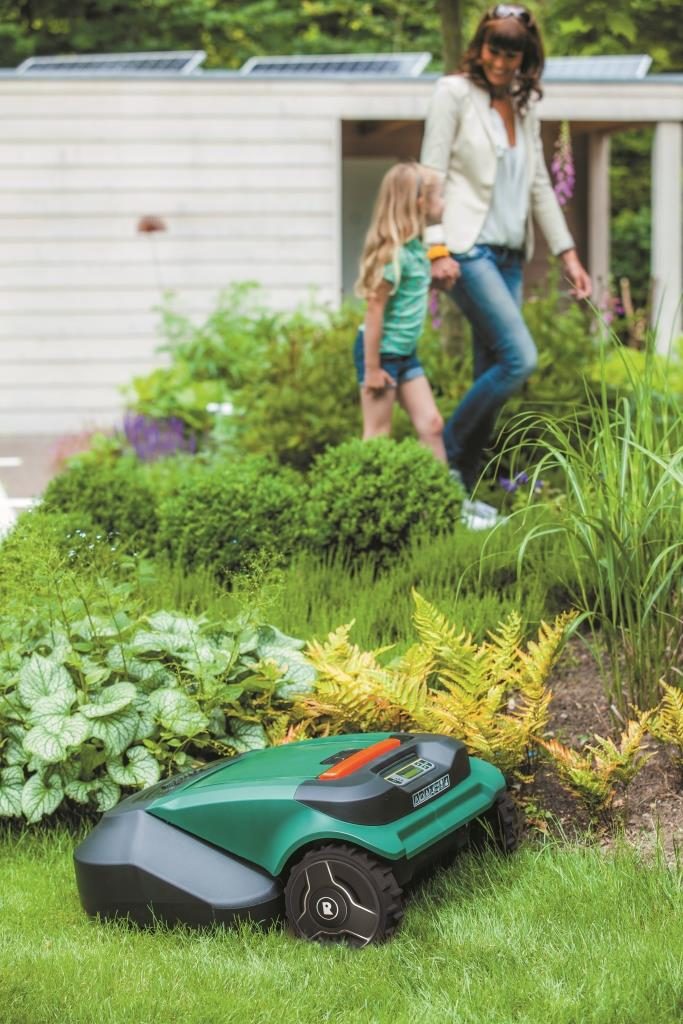Can a robotic lawnmower get stuck?
09.05.2021
Simple obstacles such as flower beds or trees are no challenge for robotic mowers. If they do make contact, the robot just stops it’s path and simply changes direction. In rare cases, though, the device gets stuck and cannot avoid certain situations without help.
Twisted gardens
Many gardens have comparatively complex layouts characterized by tight angles and curves. Lawns are repeatedly intersected by flower beds, trees or a garden ponds. To prevent the robotic lawnmower from getting stuck, the quality of the sensors is particularly important. Most manufacturers work with shock sensors, only a few models have ultrasonic technology.
🡪 In order to prevent the robotic lawnmower from getting stuck when turning in narrow places, and at the same time, to achieve high mowing efficiency by making turns elegantly and quickly, it is worth choosing a model with particularly sensitive sensors when purchasing a robotic lawnmower.
Steep slopes and extreme gradients
Robotic mowers are only designed for a certain slope. This can be 30%, 45% and even more. In addition, problems can arise, especially in wet weather, when the robot simply starts to slide. It is particularly annoying if a garden pond is at the bottom of the slope where your robot will end up.
Incidentally, the maximum slope specification does not apply to the run-out zone near the boundary wire. Since the robot turns frequently, the slope angle may only be about 15% or less.
🡪 To prevent slipping in wet grass and on slopes, robotic lawnmowers with special traction wheels are ideal. Coarse studs ensure optimum grip on the terrain, allowing the robot to move safely up and down the slope. It is also advisable to purchase a robot that can also master larger inclines effortlessly.
Fallen fruit, branches and toys on the lawn
The extent to which fallen fruit and branches on the lawn cause problems essentially depends on the blade system of the robotic lawnmower. Star blades are much more robust than blade discs. In many cases, they shred fallen fruit and other obstacles and simply continue on their way. In both cases, however, it is possible for cones and other debris to get wedged under the robot and cause it to come to a standstill.
If the robot runs over toys with a wheel and moves out of position, the blades usually stop, requiring a manual restart is necessary.
🡪 If you have fruit trees or conifers on your lawn, a robotic lawnmower with star blades is a good choice.
Holes and irregularities in the lawn
Not every lawn is absolutely level. Uneven surfaces and holes can interfere with the smooth operation of the robotic lawnmower.
🡪 A robotic lawnmower with a pendulum-suspended cutting deck follows the contour of the surface, reducing the risk of getting stuck on bumps.
Getting stuck in narrow passages
A widespread problem for robotic mowers is that they get stuck on passages that connect two zones. If the edges are too close together, the robot cannot detect the signal without error and will ping-pong from left to right without adjusting properly.
🡪 The remedy here is to have a passage with a minimum width of one meter. Furthermore, choice of a model where you can program remote start points so that the robotic lawnmower simply needs to follow the boundary wire until it reaches this point.
Gravel paths & others
While paved paths are no problem for robotic lawnmowers, care must be taken with gravel paths that are used as a crossing to a separate zone, for example. Not only can stones cause sensitive damage to the housing and ricochet off the blades, but there is also the risk of the robot getting stuck in a gravel bed.
🡪 In general, you should refrain from letting the robot drive over stony paths. However, if there are other uneven routes, (e.g. with a mulch surface), traction wheels significantly improve movement on these surfaces.
Dropping lawn edges
Another potential problem is sloping lawn edges. If not corrected, but left as a natural edge of a bed, a height difference can occur that can lead to the downfall of the robotic lawnmower. If the perimeter wire is too close to this edge, one of the wheels may get caught in the bed, causing the robot to skew. This is a typical situation when a robotic lawnmower cannot extricate itself.
🡪 On the one hand, it is of course important to lay the boundary wire accurately (preferably by an expert). An alternative may be to border your beds with bricks. These also have the advantage that the robotic lawnmower can easily trim the edges, if it does not already have a practical edge trimming function.
It is not enough to simply install the robotic mower. Certain measures need to be taken. To prevent the robot from getting stuck over and over again, it is important to remove hazards and perhaps keep an eye on the boundary areas. To do this, it is often sufficient to let the robot navigate in the first few weeks and point out potential problem areas itself. This is usually easier and more time-saving than removing every potential challenge in advance.
Products
Buy a Robomow
Robomow owner
About us
Sales & Support

